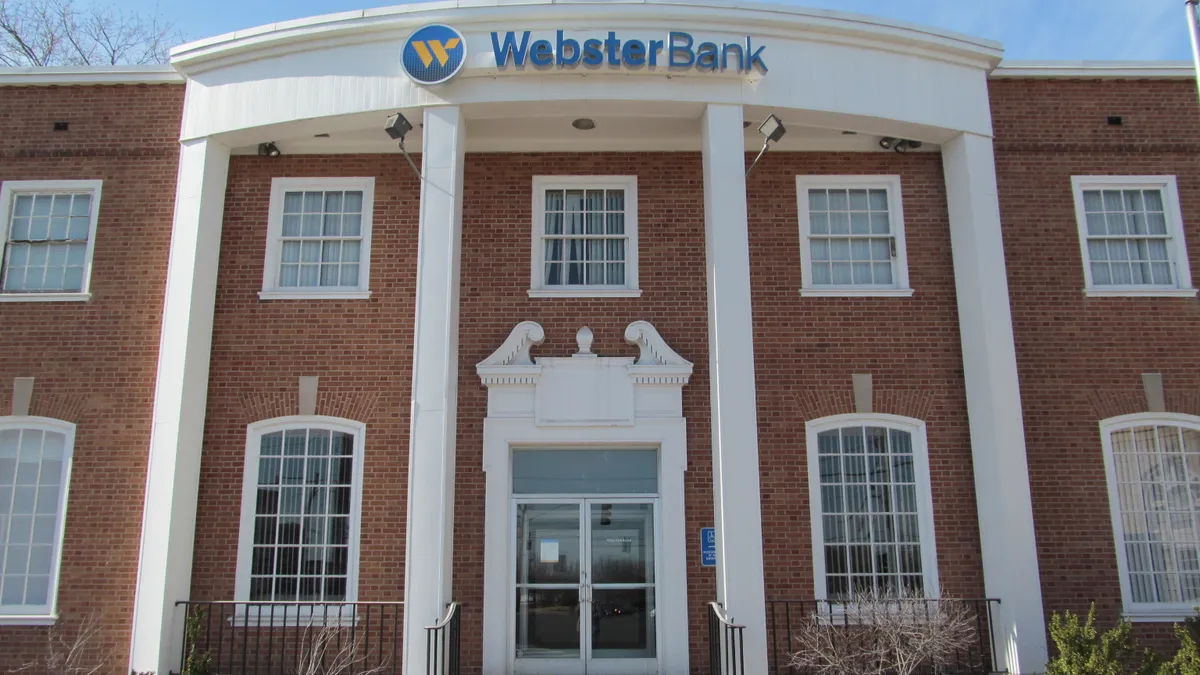The Federal Reserve is unlikely to extend its Bank Term Funding Program, the central bank’s vice chair for supervision, Michael Barr, inferred Tuesday while speaking at an event for Women in Housing and Finance.
The Fed launched that emergency lending facility last year amid the collapses of Signature and Silicon Valley Bank. It is set to expire March 11.
“That program was really designed in that emergency situation," Barr said Tuesday, according to Reuters. "It was designed for that emergency to say, we want to make sure that banks and creditors of banks and depositors [in] banks understand that banks have the liquidity they need.”
Barr’s comments come as lending in the program hit a record high of $141.2 billion a week ago, The Wall Street Journal reported. That’s up 4% from the previous week and 25% since mid-November, the publication noted.
The recent uptick in the program stems from a change surrounding interest-rate expectations. Namely, market analysts are now expecting the Fed to cut interest rates multiple times over the next year.
The emergency lending facility charges borrowing banks a rate that is 0.1 percentage point higher than the market expects benchmark interest rates to average over the subsequent 12-month span.
At the same time, banks can earn money from what they hold at the central bank in overnight deposits.
And while the lending facility offers an interest rate of less than 5%, the Fed is now paying banks 5.4% on its parked reserves — giving the impression that the lending facility is, in the short term, acting as a loophole.
“We think banks are exploiting a positive arbitrage,” Janney Montgomery Scott analyst Christopher Marinac wrote in a note this week, according to The Wall Street Journal.
Capital requirements
Fed officials are also allowing the public to comment on impact data the central bank is gathering in relation to a contentious July capital-requirements proposal, Barr indicated Tuesday.
"We want to make sure that the rule supports a vibrant economy that supports low- and moderate-income communities, that gets the calibration right upon things like mortgages," Barr told Reuters. "So the public comment that we're getting on this is really critical for us getting it right. We take it very, very seriously."
The central bank in October extended, until Jan. 16, its comment period on the capital-requirements proposal. At the same time, it launched an initiative to collect more data from banks affected by the proposal.
"What we decided to do is, in addition to that information that has already been collected [ahead of the July proposal], is to do a second quantitative impact study as part of this proposal, to make sure, first of all, that we had up-to-date information from the banks, based on their current balance sheet," Barr said, according to American Banker.
It’s upon that second data analysis that the Fed will seek commentary from the broader public, American Banker reported.
“We'll give people a chance to comment, in effect, on the impact itself," Barr said at Tuesday’s event. "It will feed into how we develop the final proposal."
No ordinary rule
That seems perhaps a unique step in rulemaking. But the capital-requirements revamp is arguably no ordinary rule — as shown by the blowback it has received. Republican lawmakers in September blasted the proposal for incorporating “paltry” impact analysis and for leaning on data that isn’t publicly available.
The Bank Policy Institute and five other trade groups, in the same month, criticized the Fed for allegedly “collecting such data during, rather than before, the comment period,” calling that prospect “legally improper.”
Todd Phillips, a law professor at Georgia State University, said the unusual call for public feedback may have been done with legal ramifications in mind.
"What seems to have happened is they intended for this data collection to be a part of the rulemaking process and somehow it got outside of the rulemaking process, and now they are trying to dot all the i's and cross all the t's to make sure everything is legally appropriate,” Phillips told American Banker.
Pushback has come, too, from atypical sources. Goldman Sachs’ 10,000 Small Business Voices initiative announced a campaign in October to encourage the Fed to abandon the proposal.
And the nonprofit Center Forward funded an ad that aired on a Sunday Night Football broadcast detailing what it saw as trickle-down consequences from the rule that would hurt small businesses and make homebuying more difficult.
It may be no accident, then, that the organization to which Barr spoke Tuesday has a focus on housing.
Consensus, conditions and shade(?)
Also atypical for the capital-requirements proposal is the reported lack of consensus, upon its release, among Fed board members themselves. The rule advanced by a 4-2 margin, spurring dissent from Republicans Michelle Bowman and Christopher Waller. Approval from the Fed board’s other Republican, Chair Jerome Powell, came with three reservations — and added that meeting those conditions was “a difficult balance to strike” but would “require public input and thoughtful deliberation.”
“There is no precedent that we can recall of a significant regulatory matter that has had this level of disagreement at the Fed,” Ian Katz, a financial policy analyst at Capital Alpha Partners, told Bloomberg. “I don’t think they will pass a final rule without Powell’s support, so he will need to do some things to appease Powell.”
Response to the capital-requirements proposal may have even come with a measure of shade from one of Barr’s colleagues.
Barr, weeks ahead of issuing the proposal, spoke about his holistic review of capital at large banks, saying he “approached the task with humility.”
Bowman, in perhaps a months-delayed callback, told the South Carolina Bankers Association at a conference last week: "My sincere hope for 2024 is that policymakers have the humility to acknowledge the intended and unintended consequences of these and upcoming regulatory reform efforts, and the courage to change course, when necessary, to mitigate and minimize these consequences.”


















